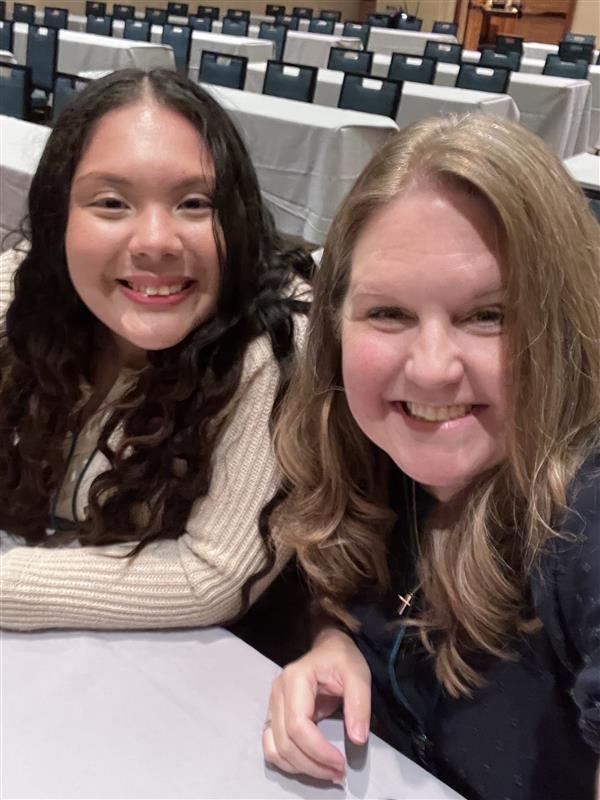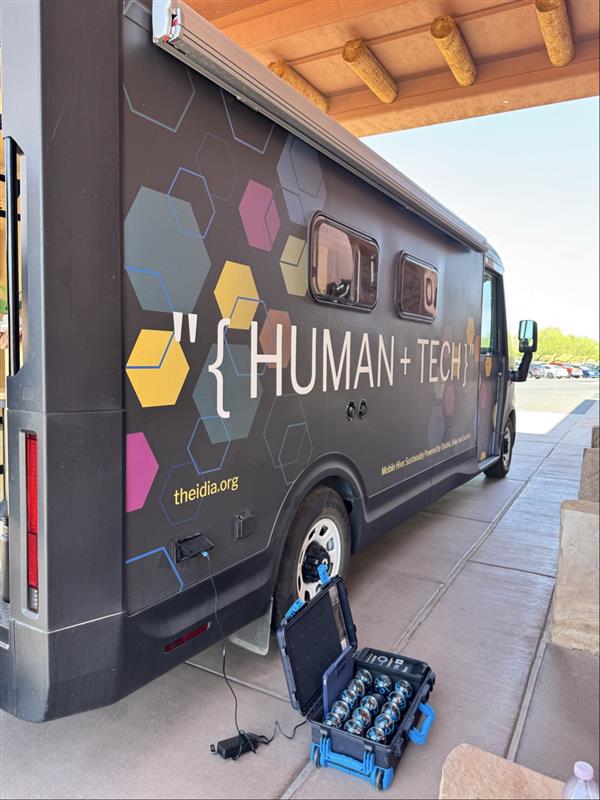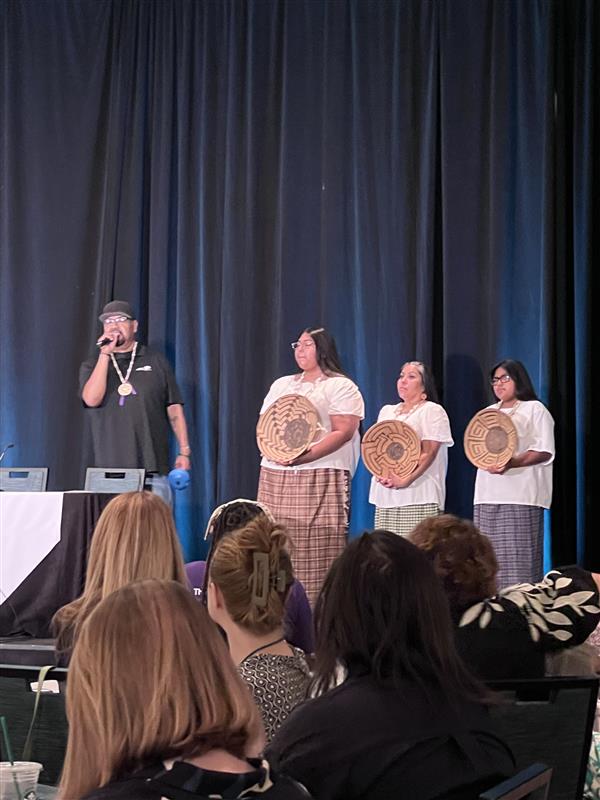
The National Digital Inclusion Alliance (NDIA) held their annual Net Inclusion conference May 20–22, at the Gila River reservation in Phoenix, Arizona. BridgingApps delegates were Amy Fuchs, Program Manager; Alejandra “Ale” Gonzalez, Digital Navigator; and Tara Rocha, Digital Learning Specialist. Tara sat on the panel for “Digital Equity Strategies to Serve the Needs of People with Disabilities,” and highlighted speech-and-language resources including:
- Our Did You Know videos in English and Spanish
- Live-caption smartphone features
- Microsoft Edge’s read-aloud feature with customizable voices
- Microsoft PowerPoint Live’s captioning and translation features
- Otter
- SnapType Pro 2
- Speechify
- Splay foldable monitor and projector
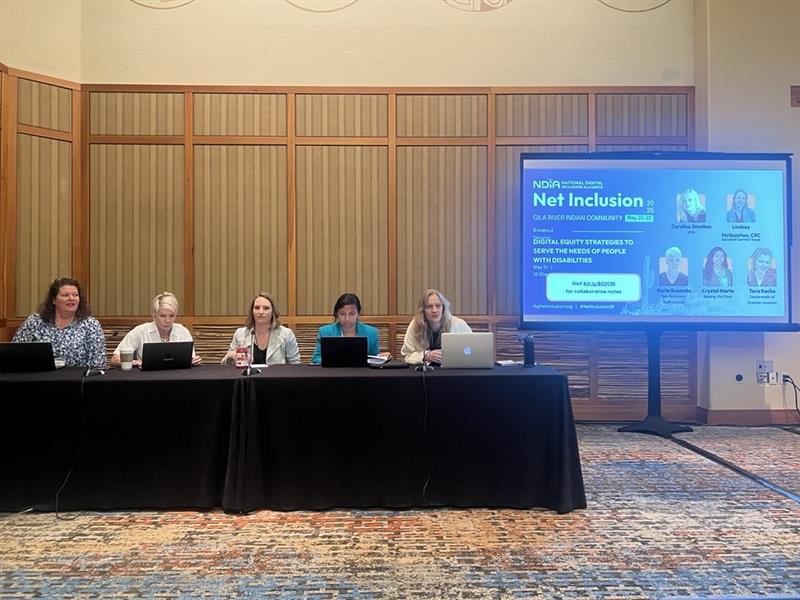
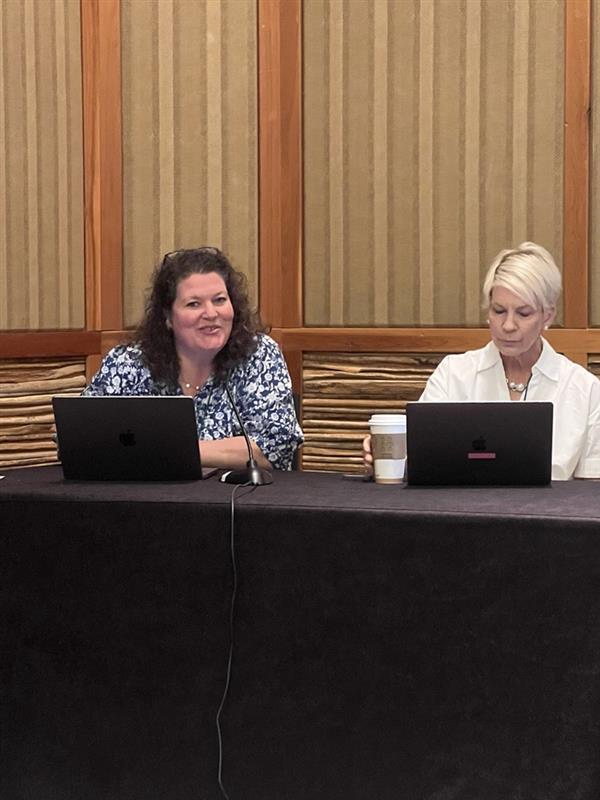
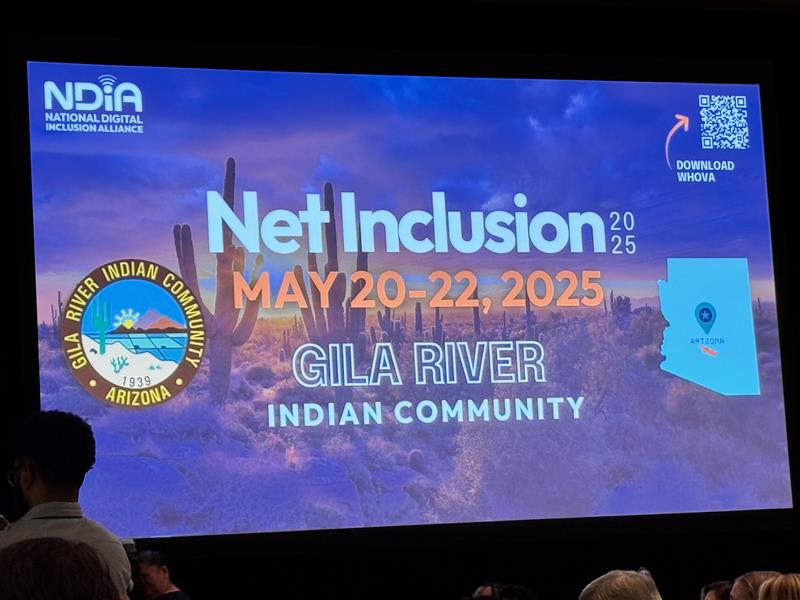
Attendee Report by Tara Rocha
All the sessions I attended were very good. The Digital Equity Strategies panel was moderated by Caroline Stratton from NDIA, and included panelists from three other organizations: Goodwill Central Texas; Raising the Floor (from our friends at Morphic); and San Francisco Tech Council.
To get more from the sessions, participants could access a collaborative notes file and also share our own notes (some of which were recorded and transcribed via Otter AI). I loved accessing the transcription of an AI session Ale attended while I was at “Digital Literacy for Older Adults”: both sessions provided helpful information to share with our senior fintech classes.
I also loved the support of having Amy and Ale attend my panel session, which attracted an audience with a pretty high level of technical knowledge and vocabulary (a different experience for me, since I typically present to teachers and parents). While sharing how BridgingApps uses technology to help transition-age students, I also shared about (simultaneously) helping my own 18-year-old navigate that stage.
And I shared how I’ve had to learn myself that disabilities are many and often invisible. As stated by fellow panelists: “In our work, we have to assume that everyone has some kind of disability.”
Attendee Report by Amy Fuchs
While this wasn’t a disability conference—the “inclusion” NDIA focuses on is primarily economic—several programs were relevant to our work. I especially remember “Bridging the Digital Divide for Multilingual Learners,” since BridgingApps is working on improved services for Spanish-speaking clients.
“Bridging the Digital Divide” talked about linguistic and cultural barriers, and about tools for overcoming those barriers: Google Translate, videoconferencing, puppets and other artistic approaches. A couple of memorable “outreach and engagement” points:
- People don’t come for the “broccoli” [the try-it-it’s-good-for-you stuff]; they come for the “cheese” [fun stuff relevant to their own lives]. Put some “cheese” into every outreach.
- No engagement = No learning.
Net Inclusion included plenty of engagement: I love meeting new contacts who share our mission of spreading digital equity. Karla Suomala, who sat on the panel with Tara, is Co-Director of the San Francisco Tech Council: she introduced me to some new resources, including:
- Digital Accessibility: There is no single solution that works for everyone! (30-minute video with Cordelia McGee-Tubb)
- My favorite: Microsoft’s Inclusive 101 Guidebook. It’s very readable, with plenty of illustrations and white space. I especially appreciated the parts on “beauty of constraints” (similar to the “curb-cut effect”) and the “persona spectrum.” (The spectrum runs from permanent disability to temporary disability to “situational disability”—the latter meaning a temporary barrier that can affect anyone, as with a person who has typical hearing but can’t make out what their companion is saying because the surroundings are so noisy.)
[The Guidebook’s definition of “inclusive design”: “A design methodology that enables and draws on the full range of human diversity [and is created with help from] people with a range of perspectives. Designing inclusively doesn’t mean you’re making one thing for all people. You’re designing a diversity of ways for everyone to participate in an experience with a sense of belonging.”]
Attendee Report by Ale Gonzalez
Two local Native American tribes designed and run the hotel where the conference was held, and in the first session they shared one of their traditional dances. I also enjoyed the Interpretive Trail behind the hotel, which followed the gorgeous Gila River: a beautiful sight and extremely relaxing.
I participated in two Net Inclusion sessions that focused on introducing AI to seniors. AI is already part of most seniors’ daily tech use: AI overviews on Google search results; AI email categorization; AI in social media; and so on. I learned that the best way to talk about AI is to start with bite-sized segments added to lessons I am already doing. For example, including AI categorization in an “about email” lesson.
I also attended the Multilingual Learners session: it’s very important we know how to serve these communities. My biggest takeaways from that session: always build trust, and go to the community in person whenever possible.
And I joined a breakout session for Latinos in Digital Equity, where I met a lot of people offering services in Spanish. I plan to stay connected with them, for help brainstorming ideas to serve the Spanish-speaking population in Houston.
